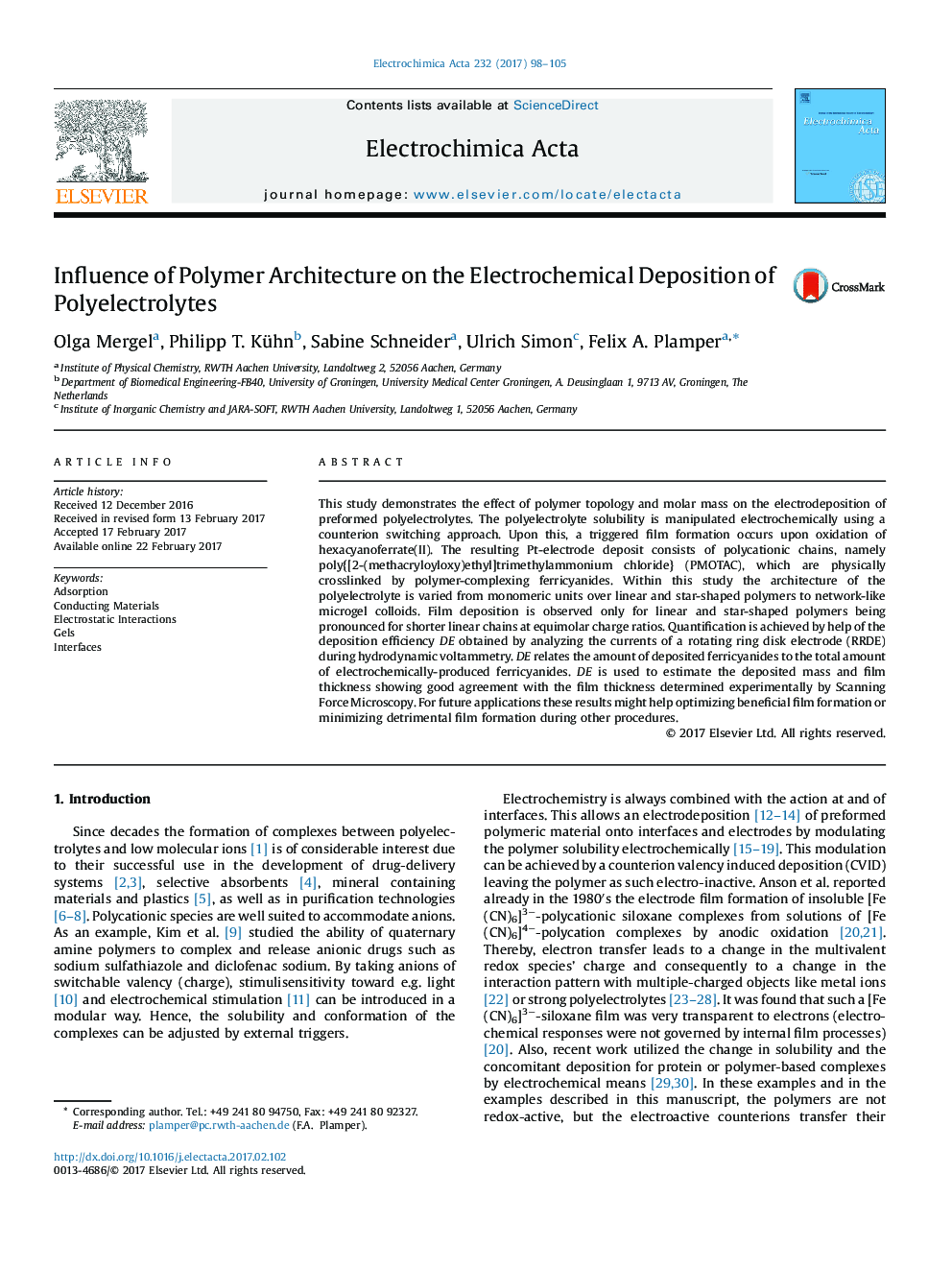| کد مقاله | کد نشریه | سال انتشار | مقاله انگلیسی | نسخه تمام متن |
|---|---|---|---|---|
| 6471785 | 1424125 | 2017 | 8 صفحه PDF | دانلود رایگان |
• Electrodeposition of quaternized PDMAEMA in presence of ferrocyanide is demonstrated.
• Deposition Efficiency can be quantified by help of a Rotating Ring Disk Electrode.
• Deposition Efficiency data can be transferred to film formation at any electrode.
• Deposition Efficiency allows estimation of mass and thickness of conductive deposit.
• Linear polycations of moderate molecular weight are most efficient in the deposition.
This study demonstrates the effect of polymer topology and molar mass on the electrodeposition of preformed polyelectrolytes. The polyelectrolyte solubility is manipulated electrochemically using a counterion switching approach. Upon this, a triggered film formation occurs upon oxidation of hexacyanoferrate(II). The resulting Pt-electrode deposit consists of polycationic chains, namely poly{[2-(methacryloyloxy)ethyl]trimethylammonium chloride} (PMOTAC), which are physically crosslinked by polymer-complexing ferricyanides. Within this study the architecture of the polyelectrolyte is varied from monomeric units over linear and star-shaped polymers to network-like microgel colloids. Film deposition is observed only for linear and star-shaped polymers being pronounced for shorter linear chains at equimolar charge ratios. Quantification is achieved by help of the deposition efficiency DE obtained by analyzing the currents of a rotating ring disk electrode (RRDE) during hydrodynamic voltammetry. DE relates the amount of deposited ferricyanides to the total amount of electrochemically-produced ferricyanides. DE is used to estimate the deposited mass and film thickness showing good agreement with the film thickness determined experimentally by Scanning Force Microscopy. For future applications these results might help optimizing beneficial film formation or minimizing detrimental film formation during other procedures.
Figure optionsDownload high-quality image (116 K)Download as PowerPoint slide
Journal: Electrochimica Acta - Volume 232, 1 April 2017, Pages 98–105
